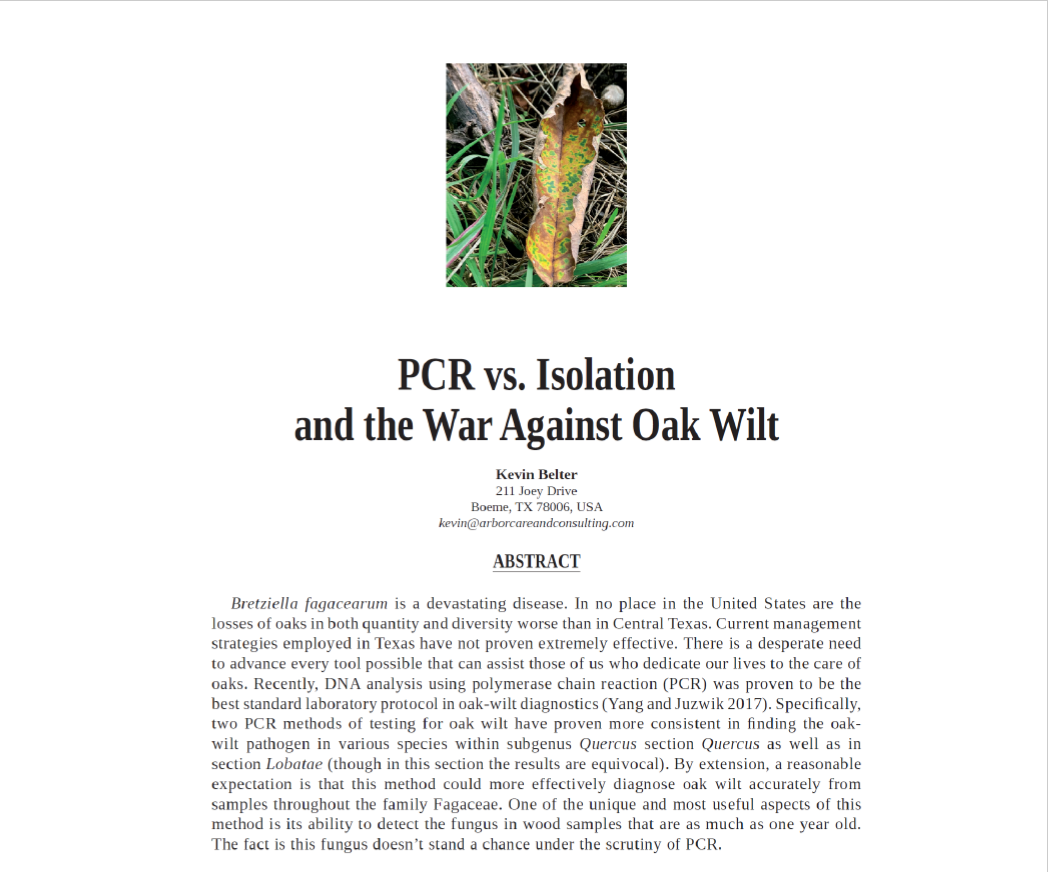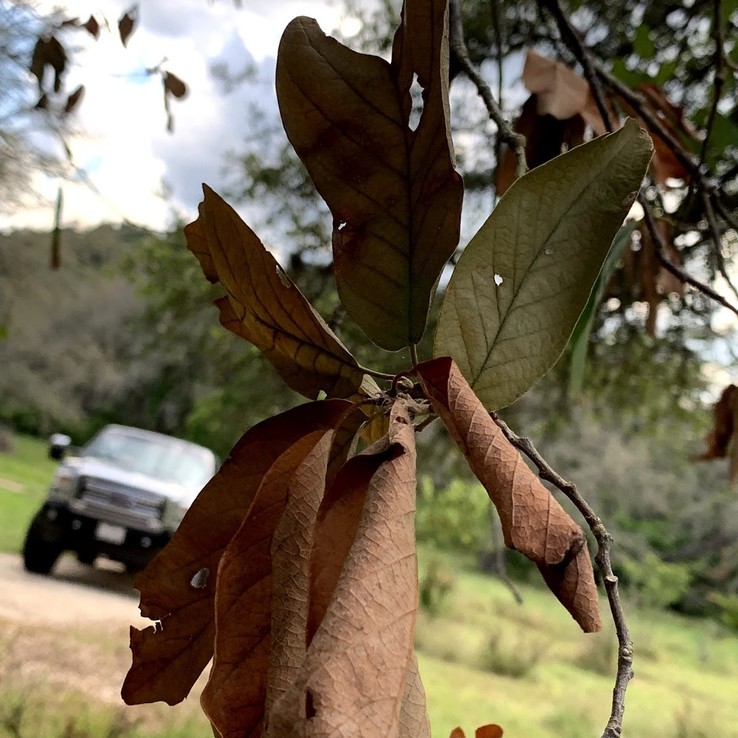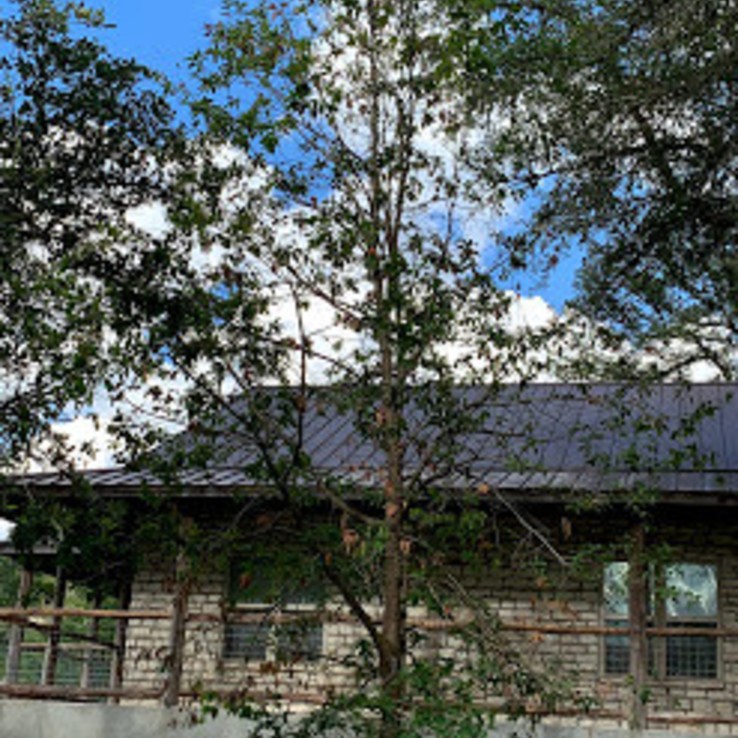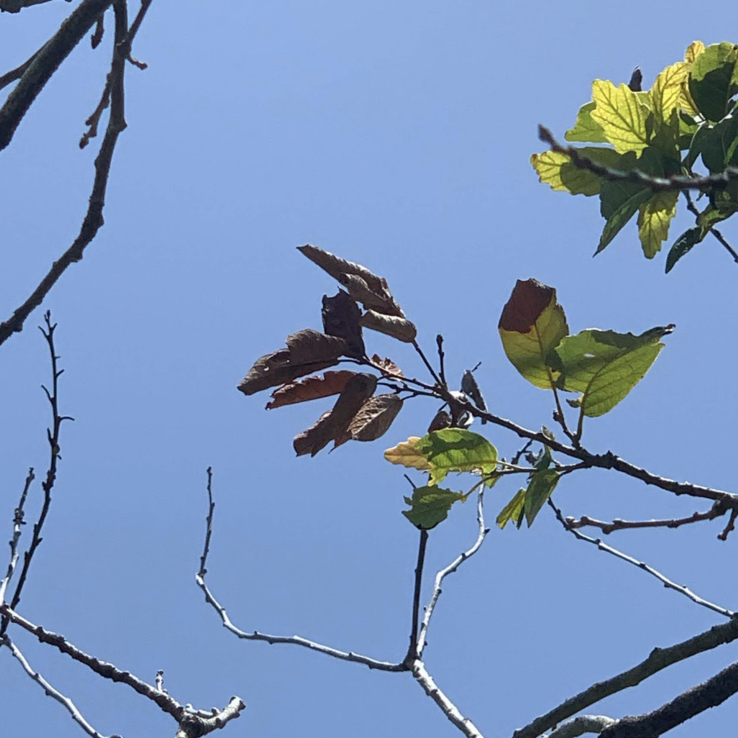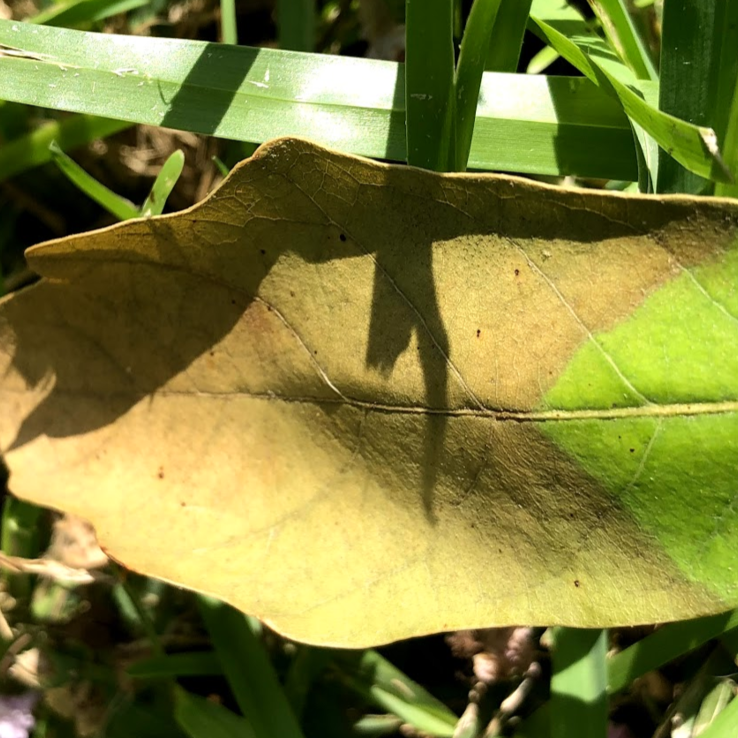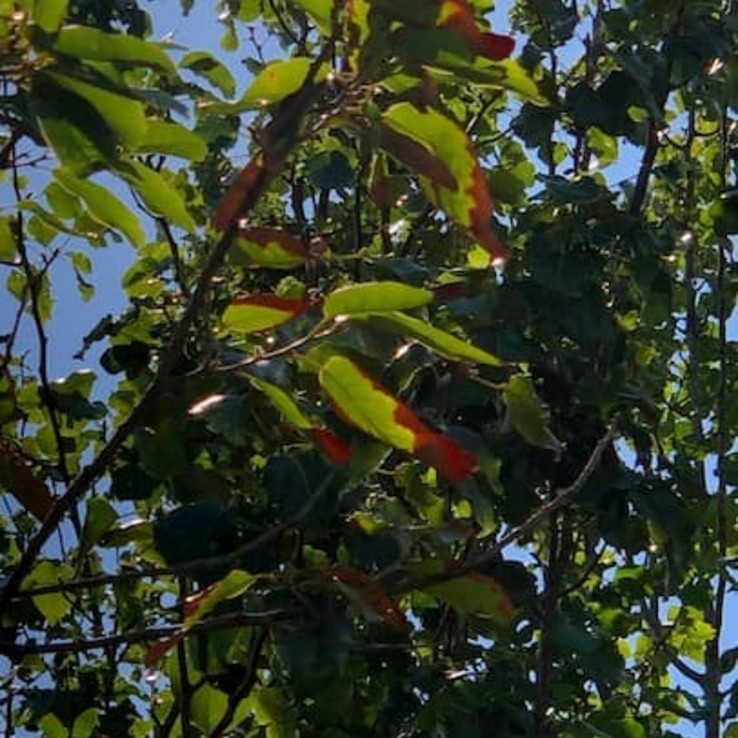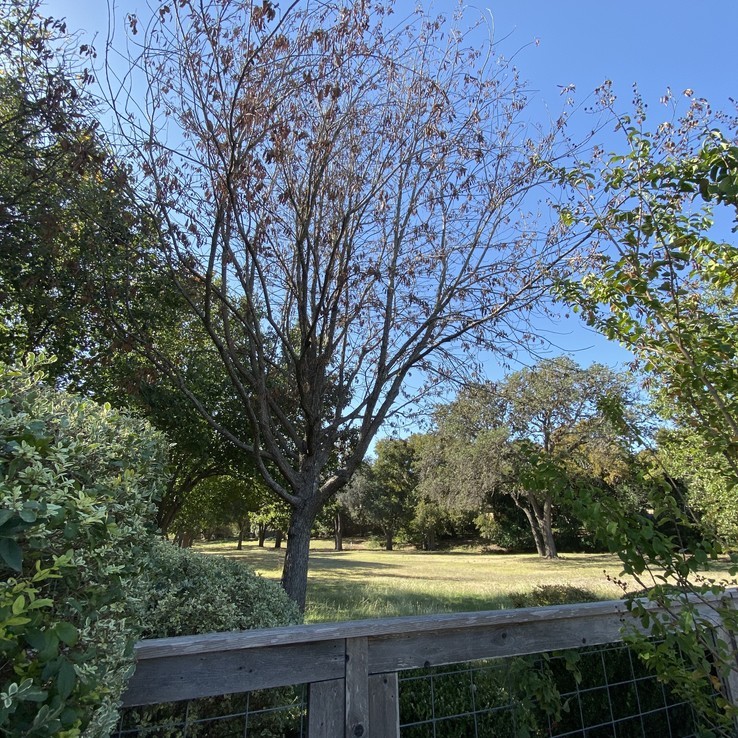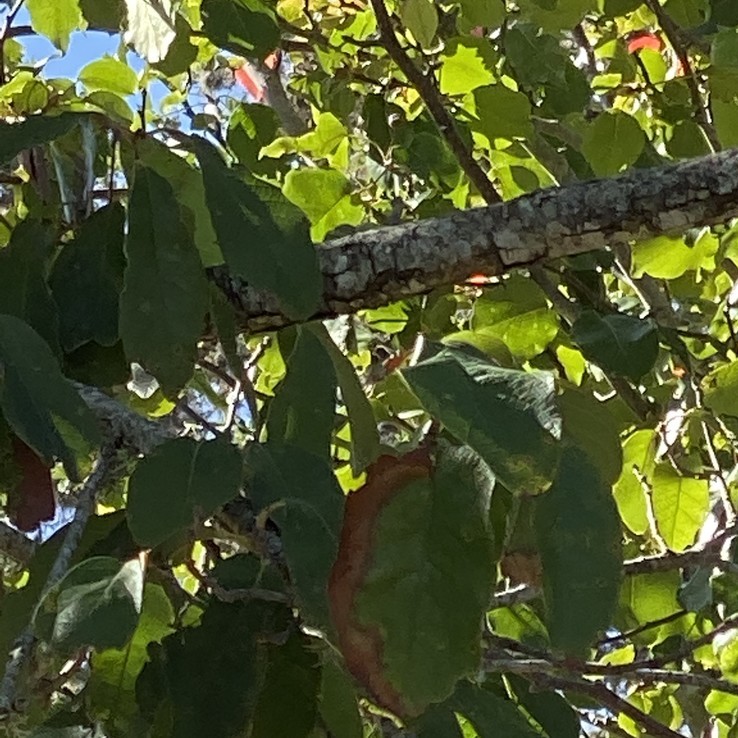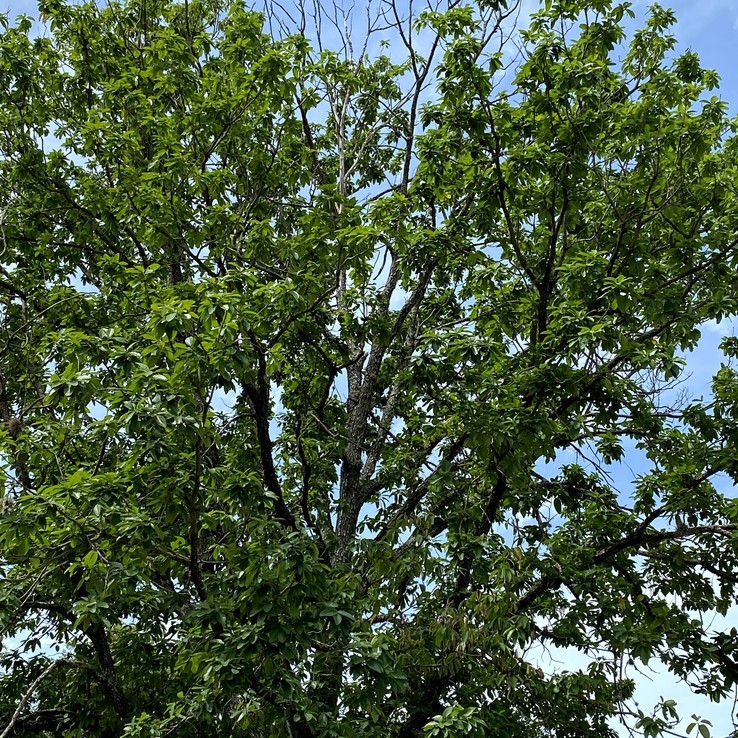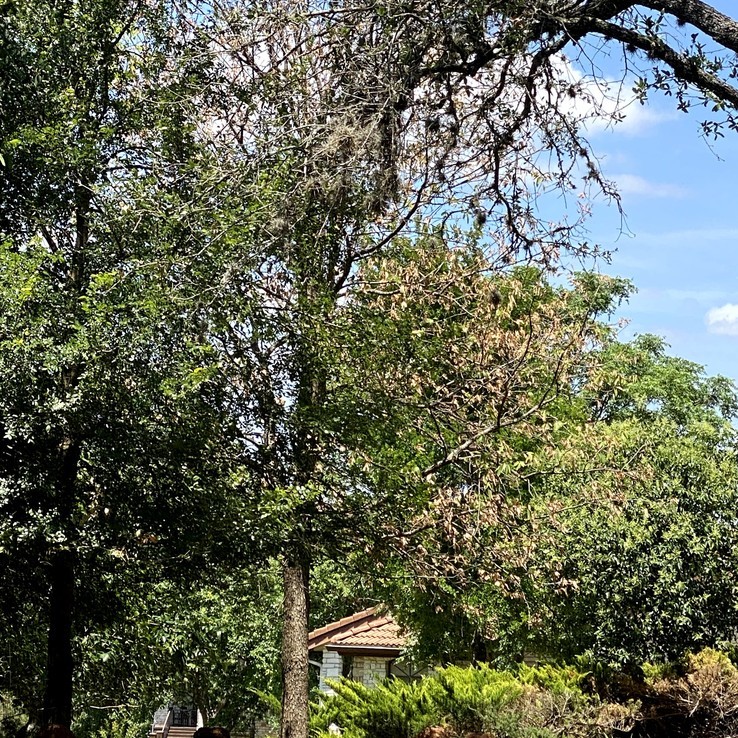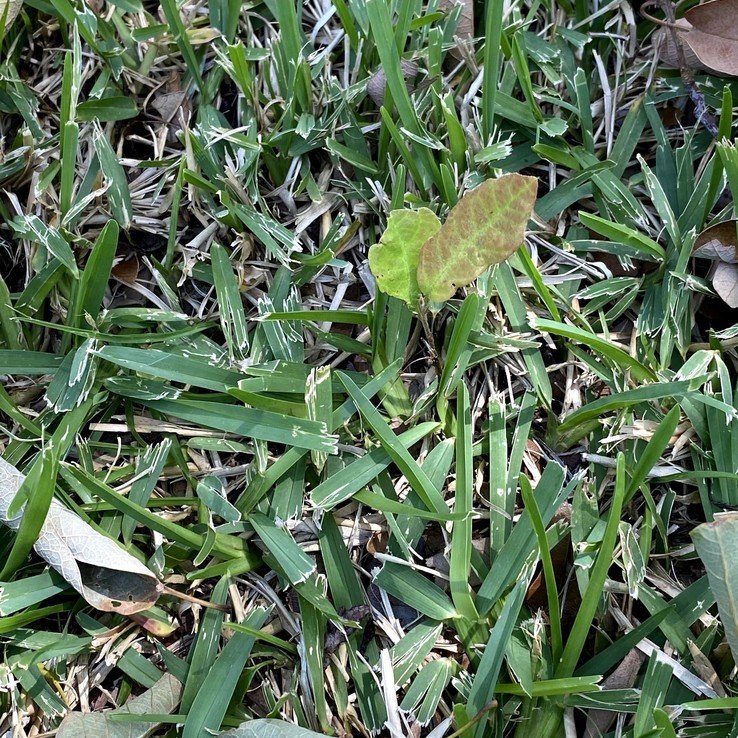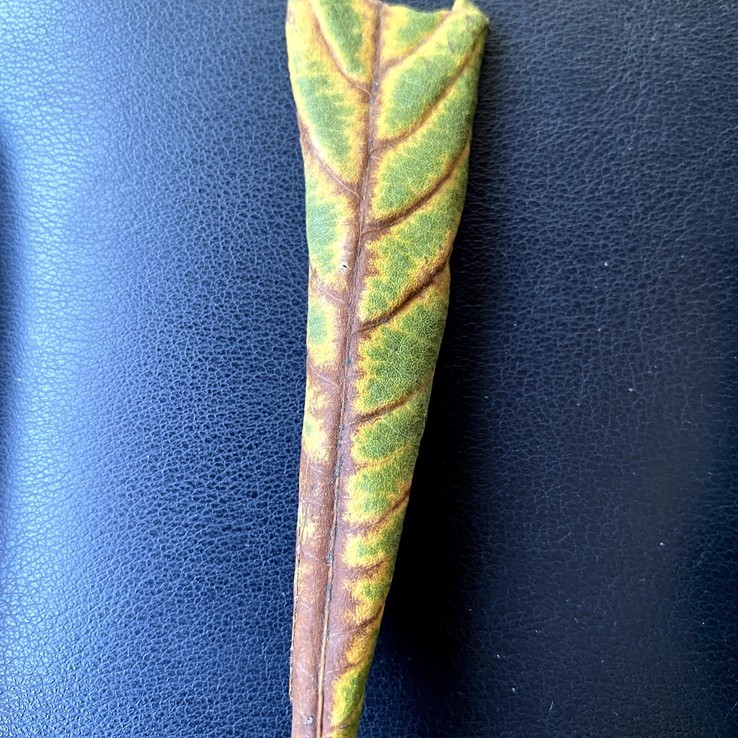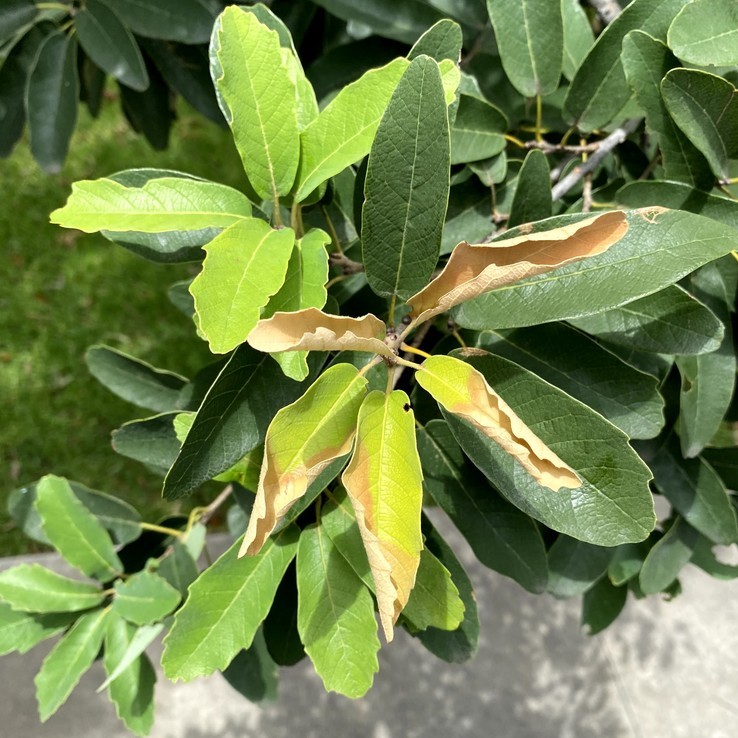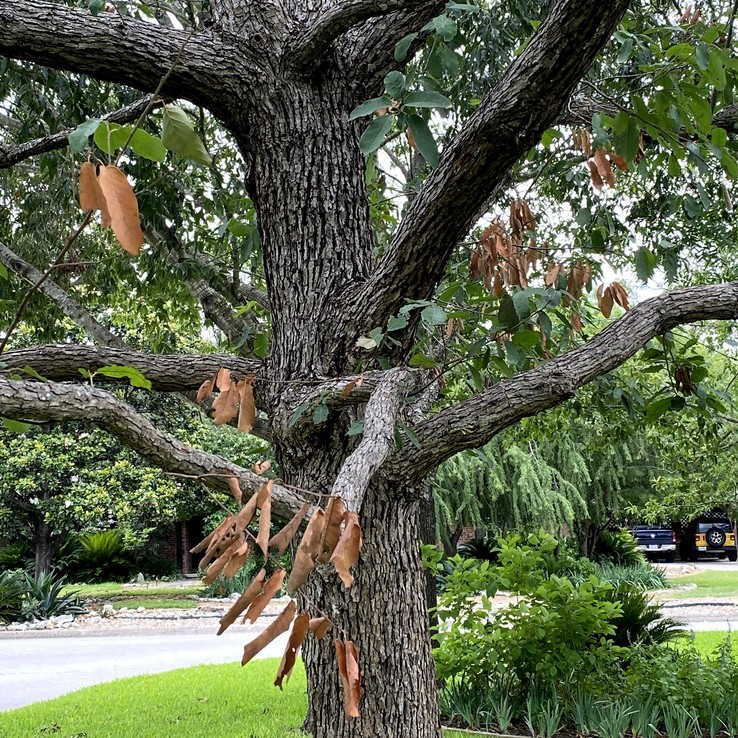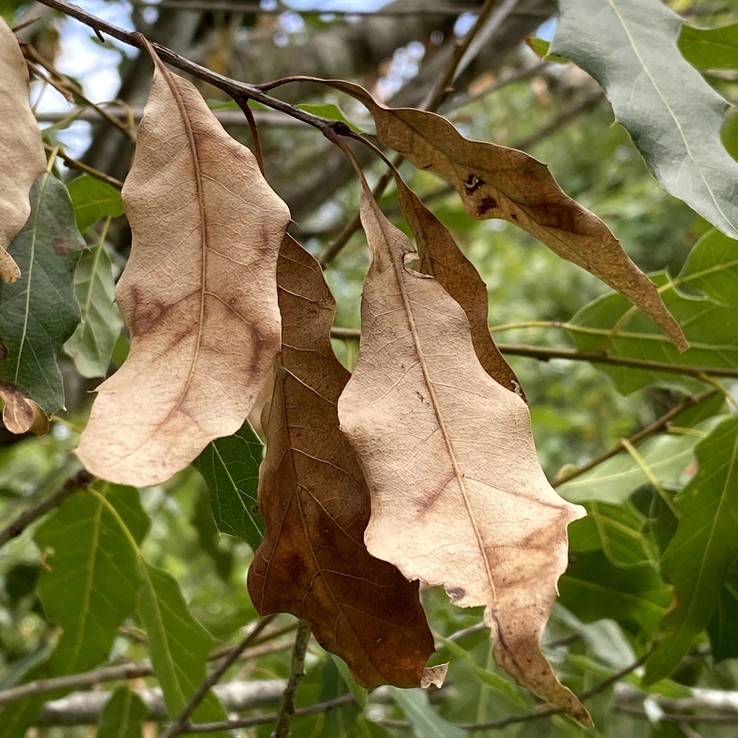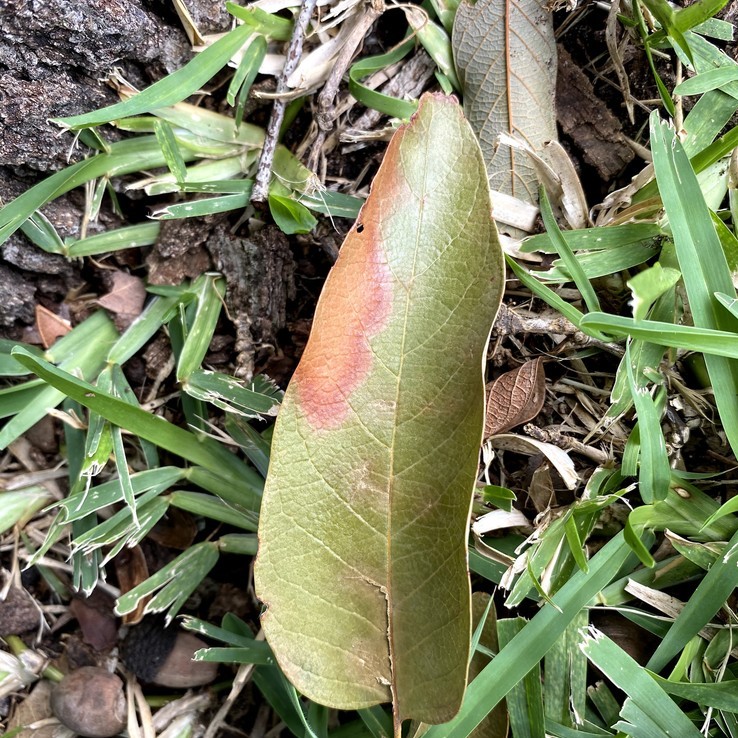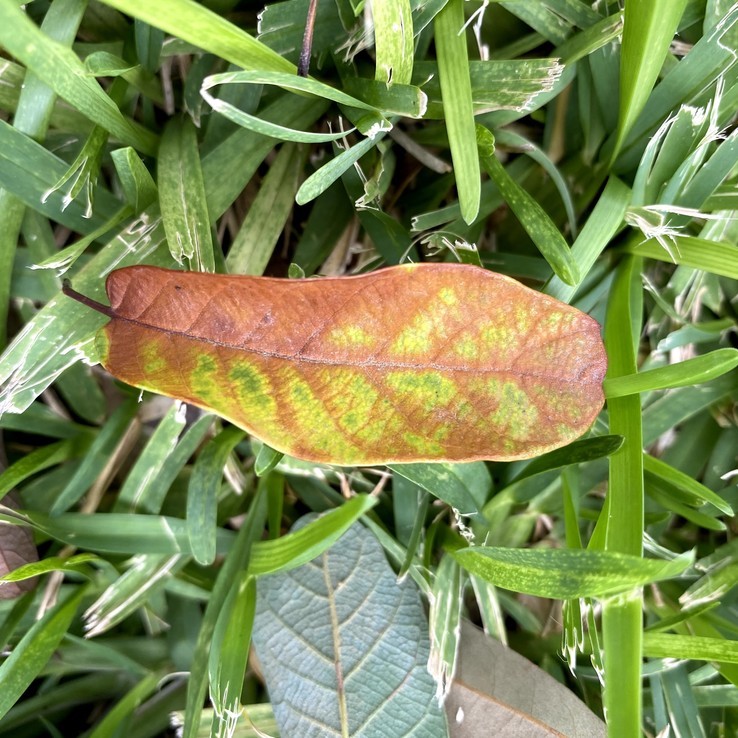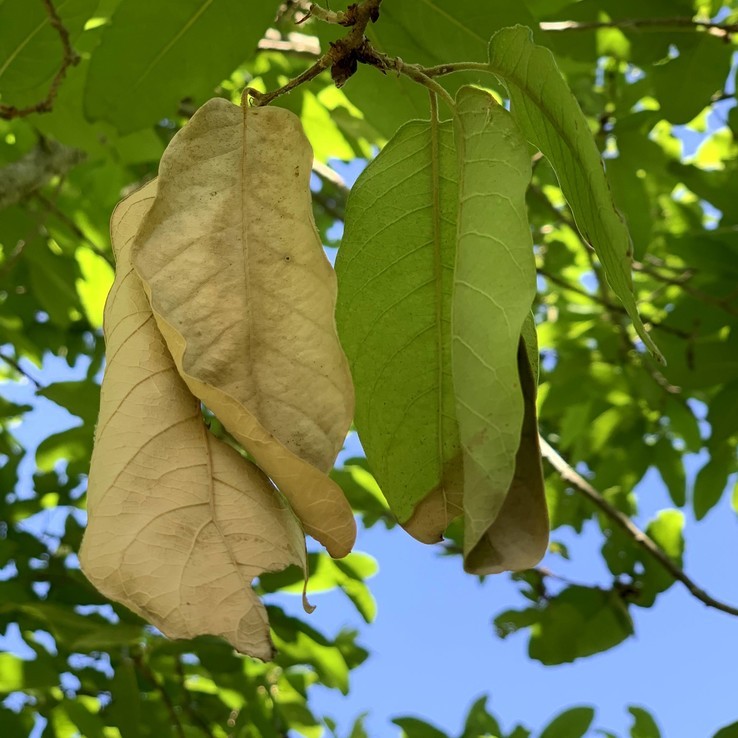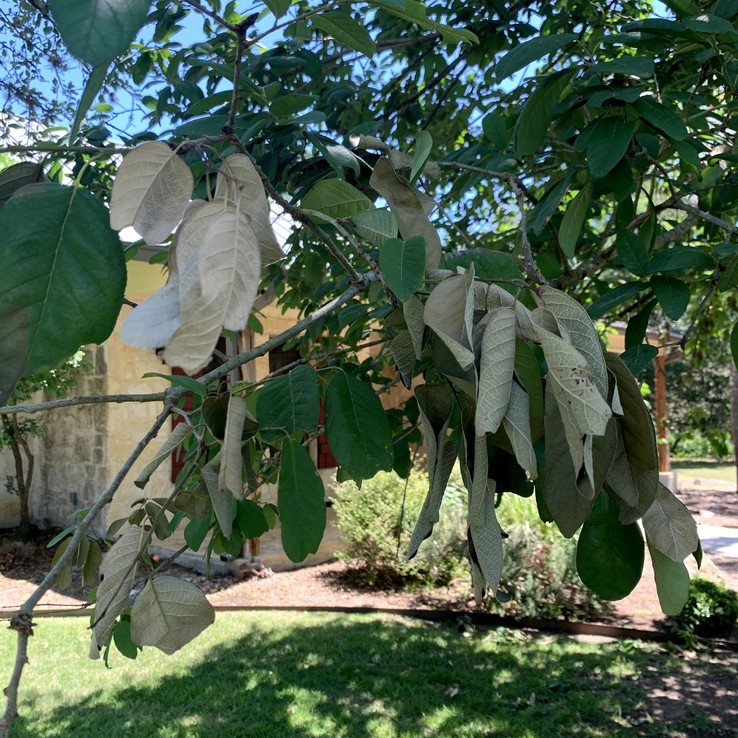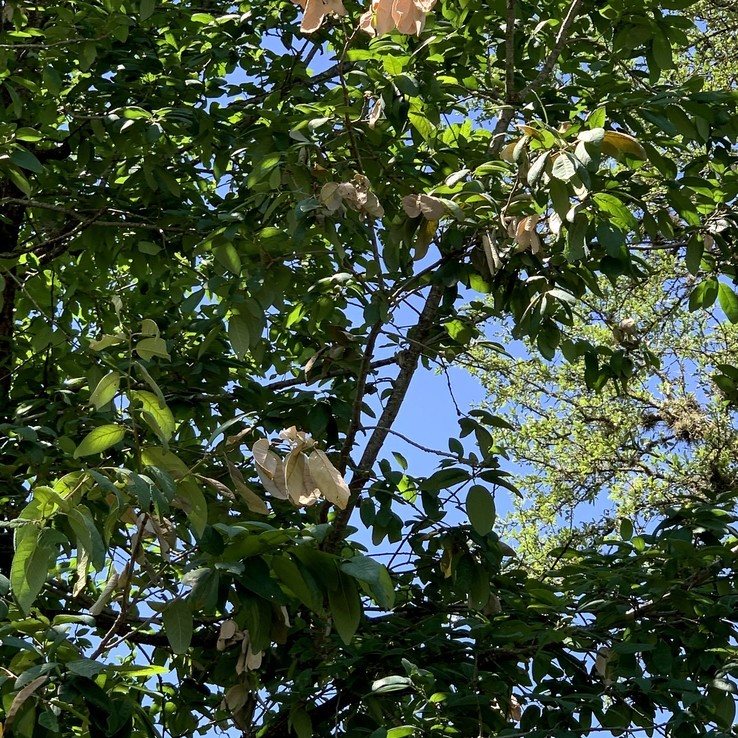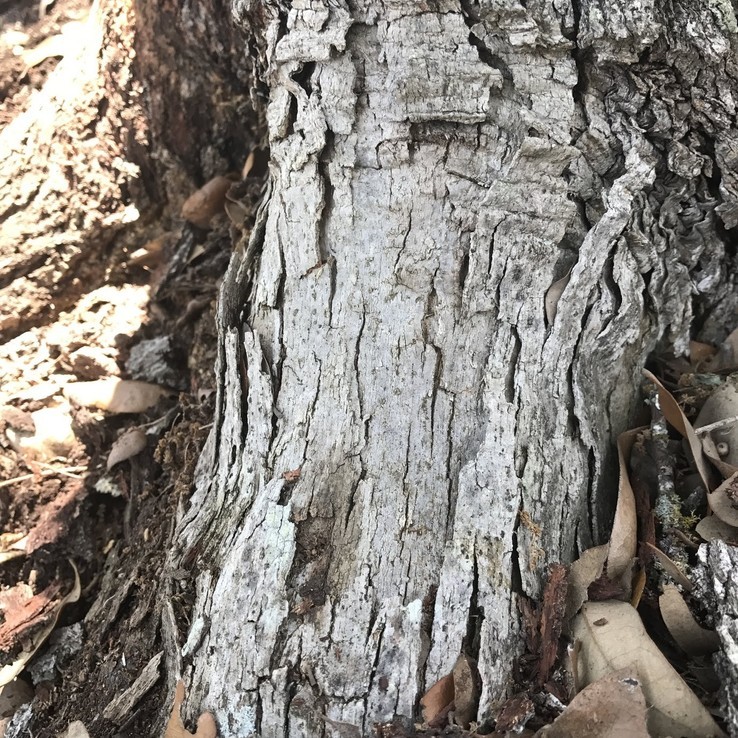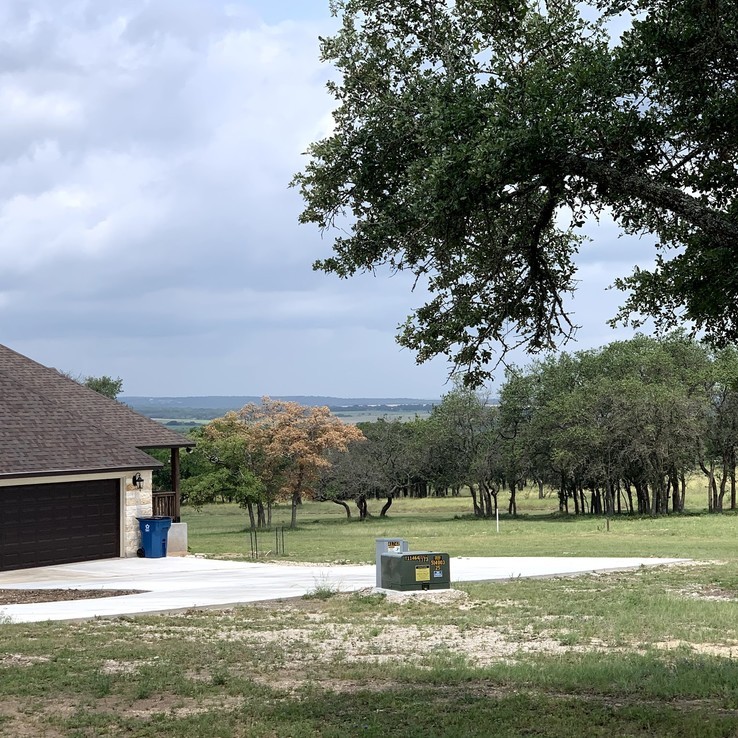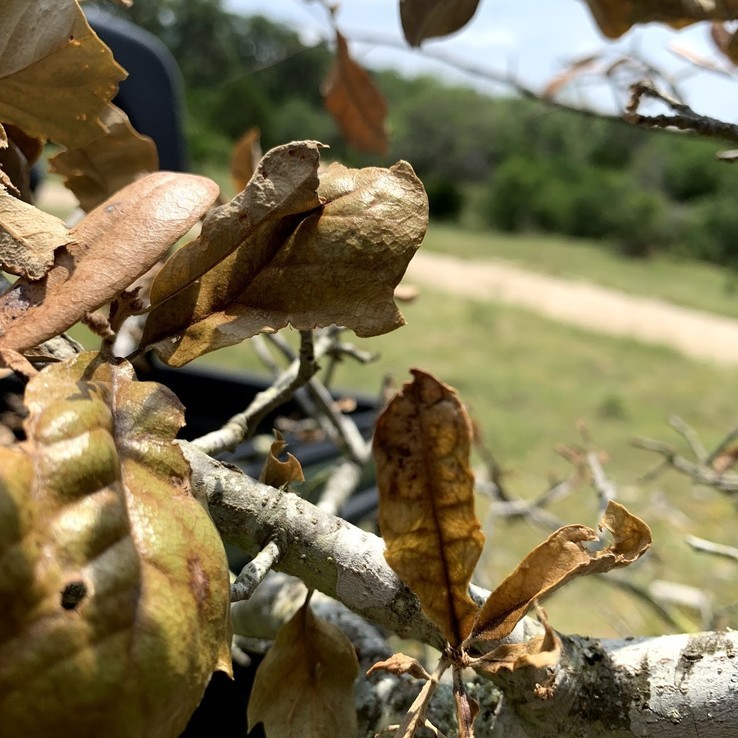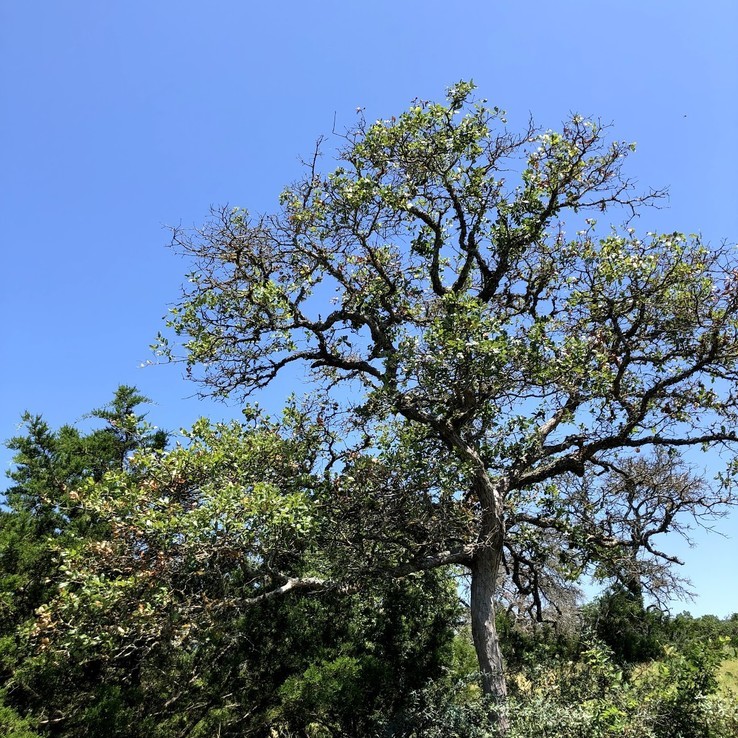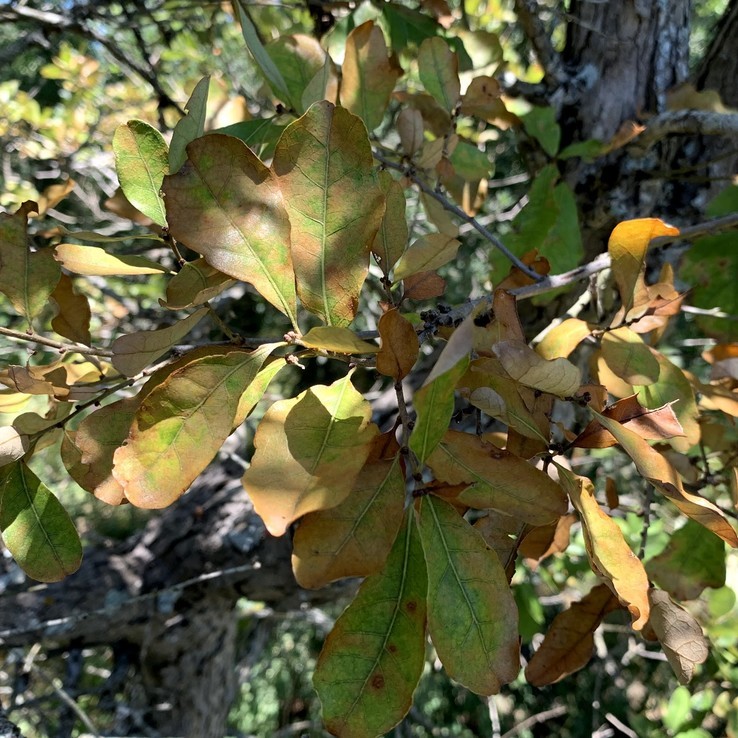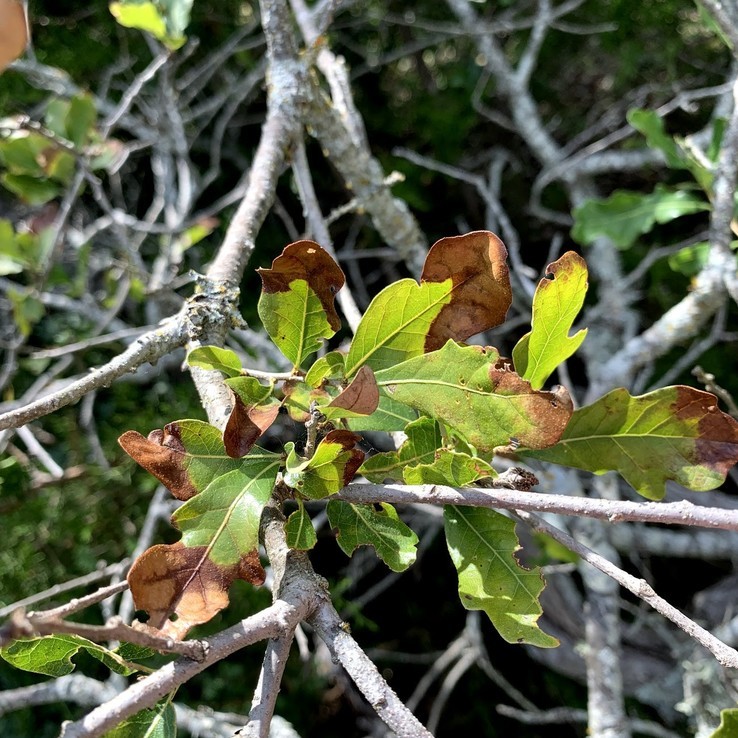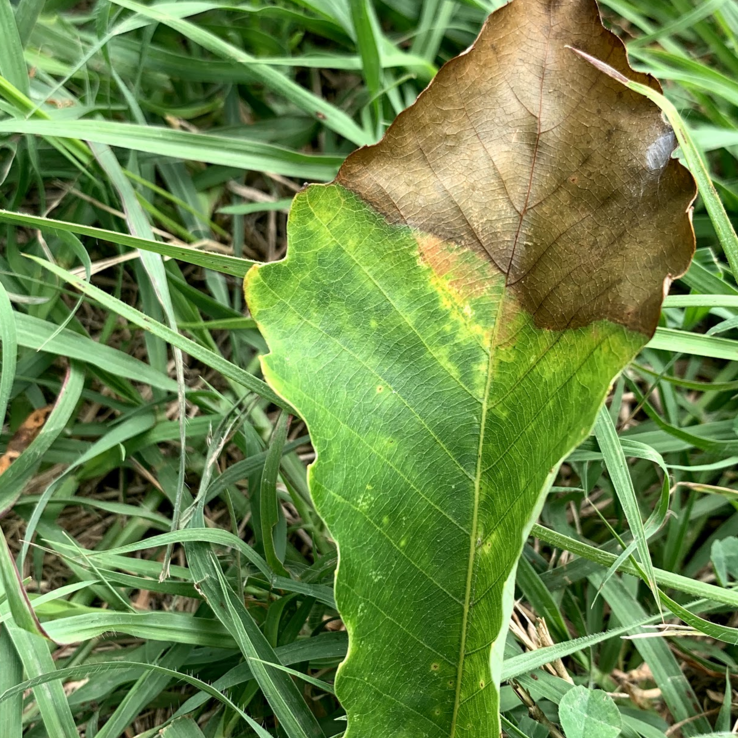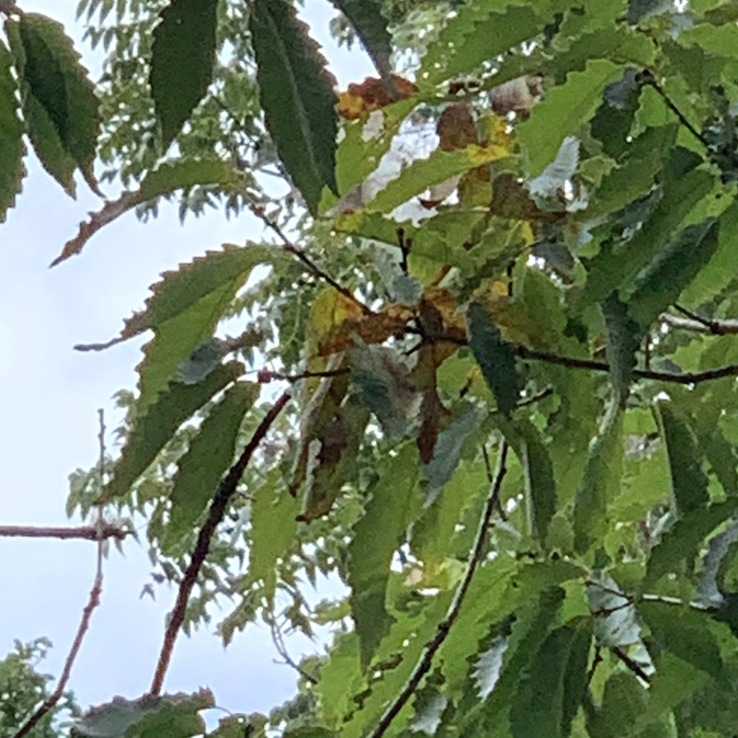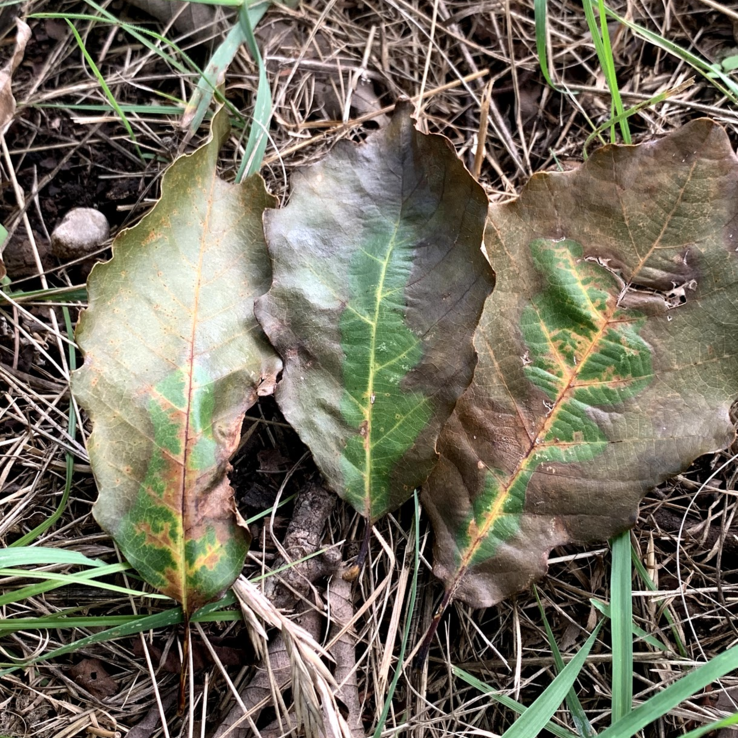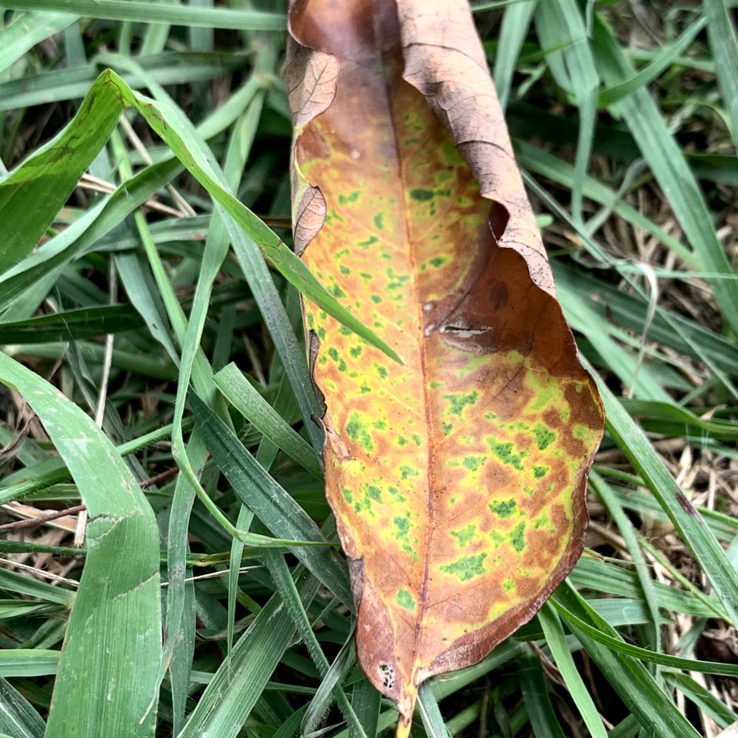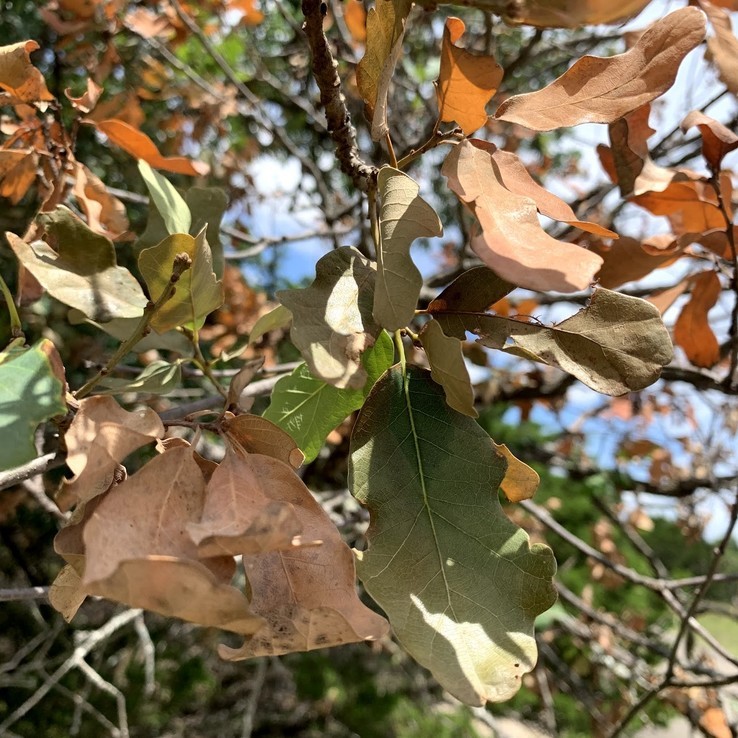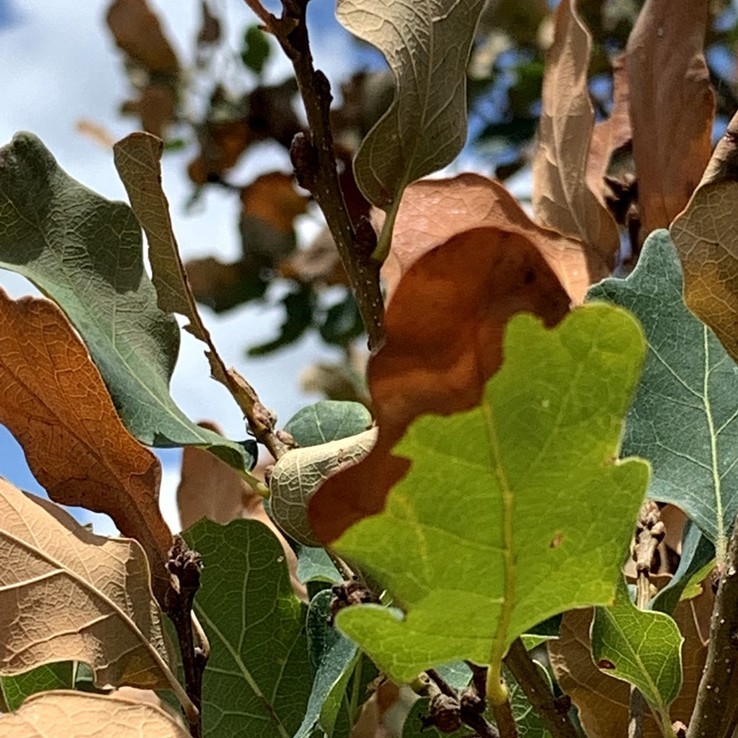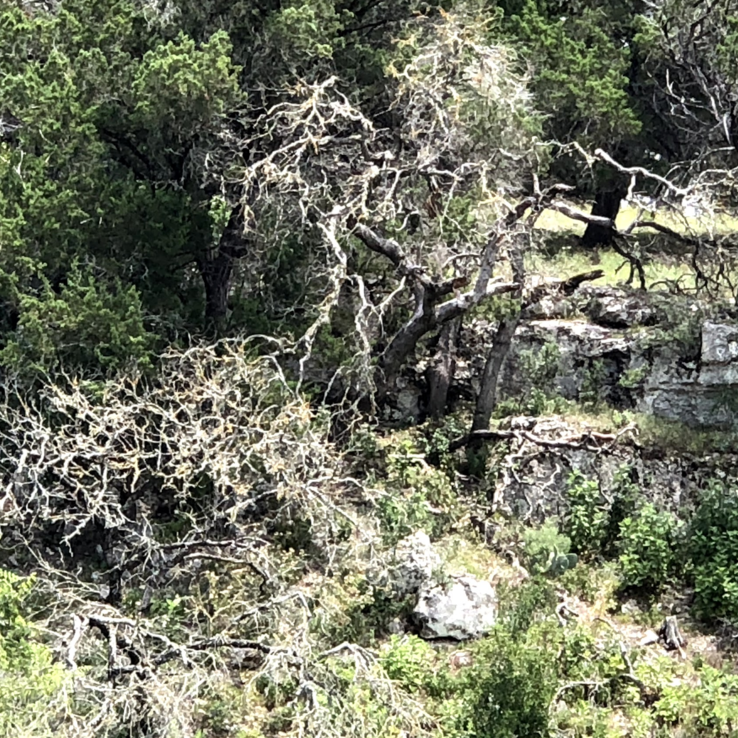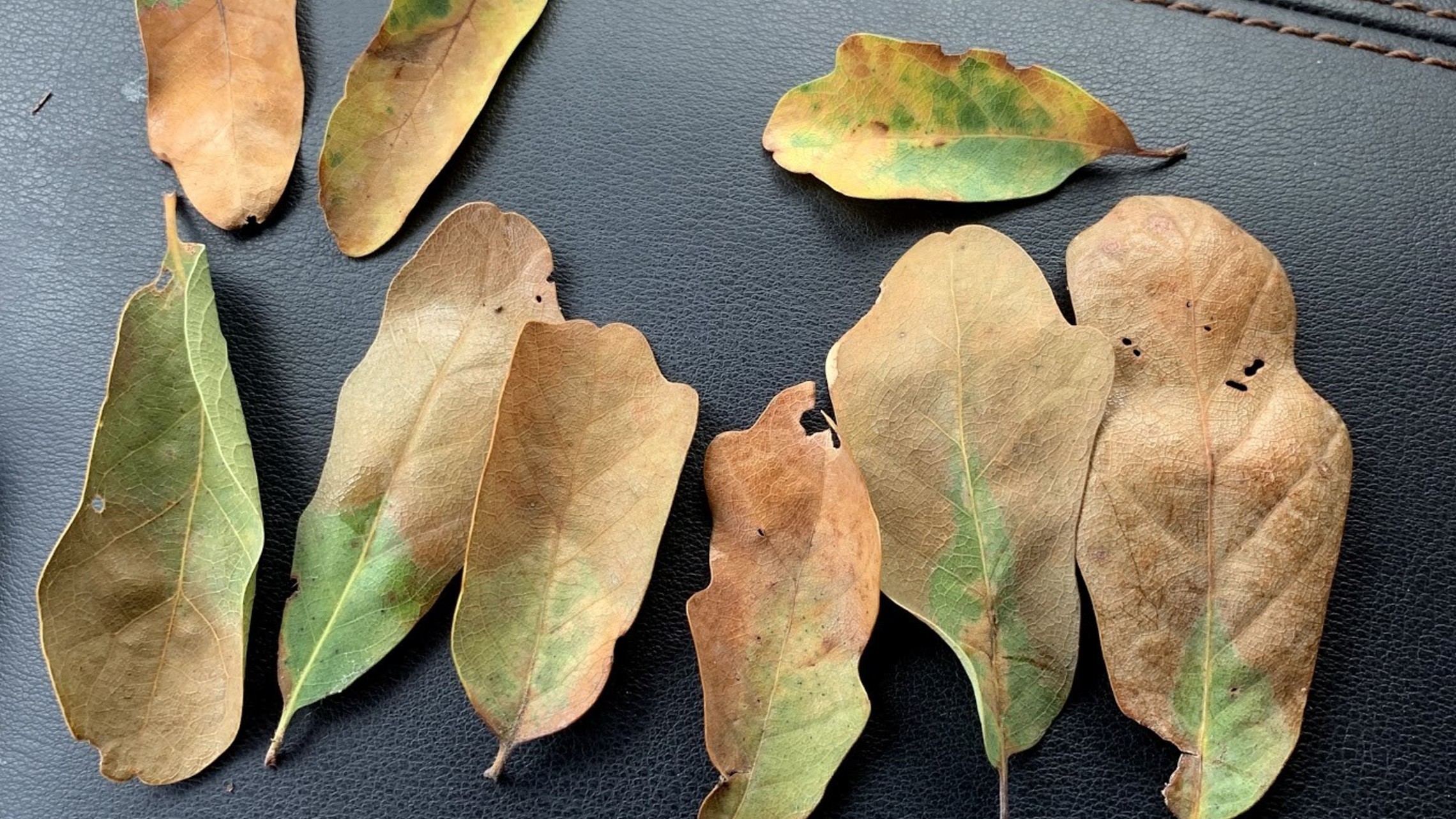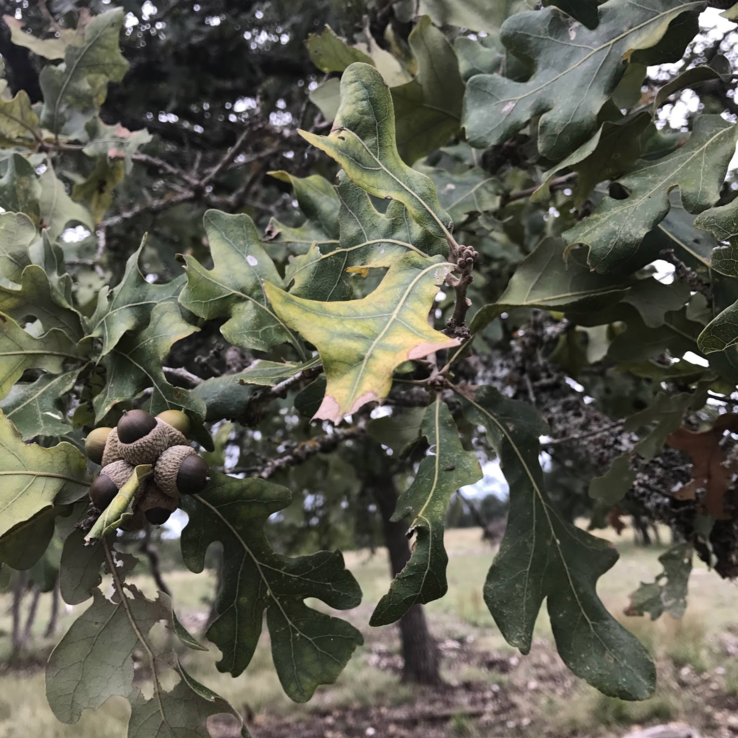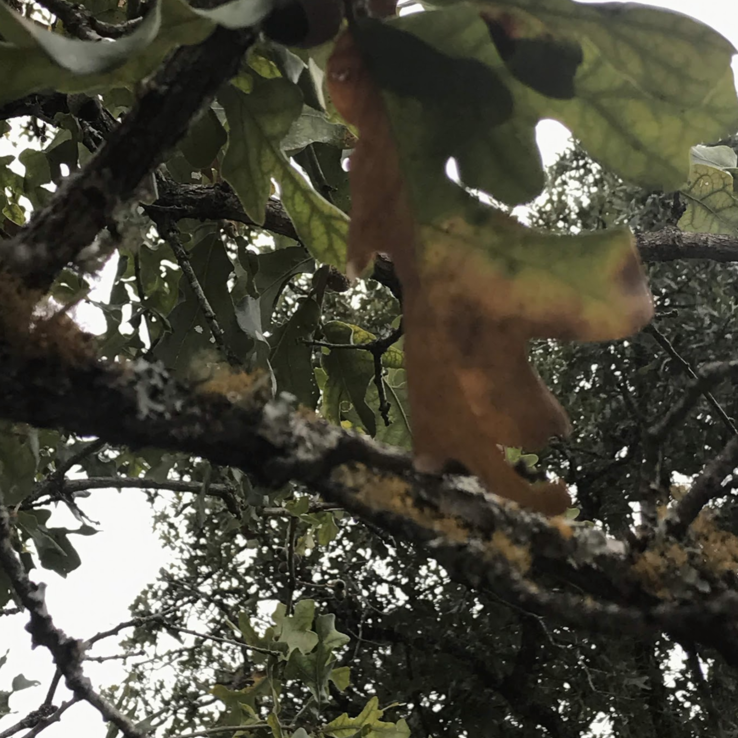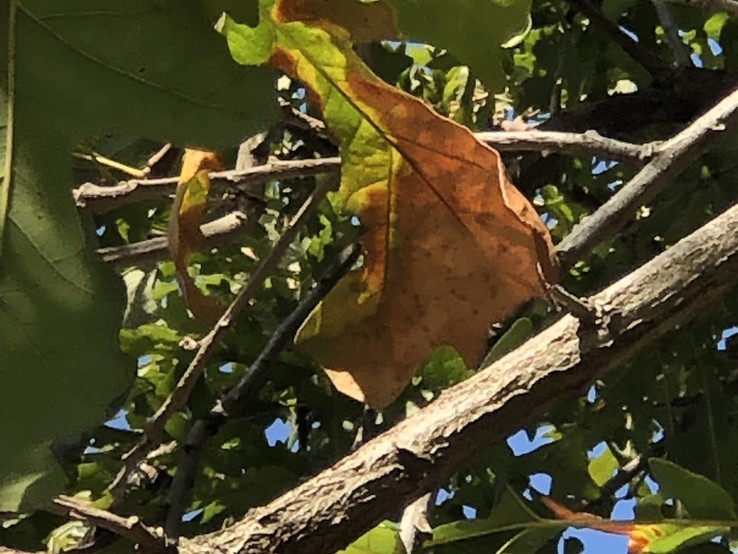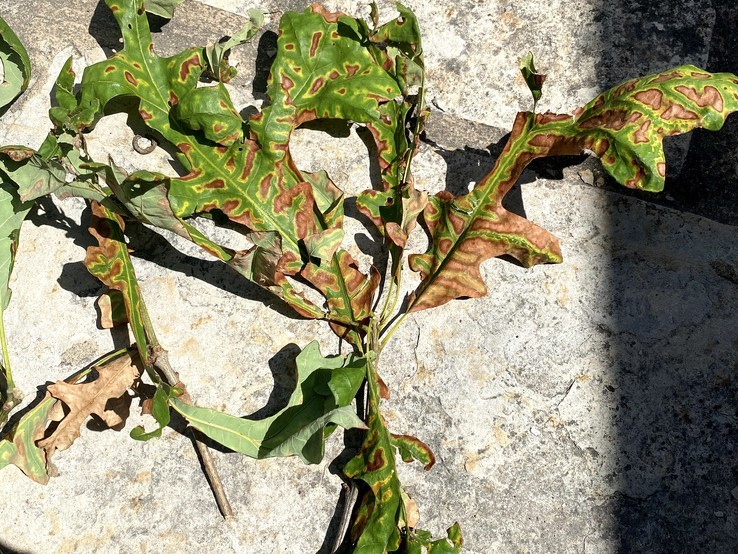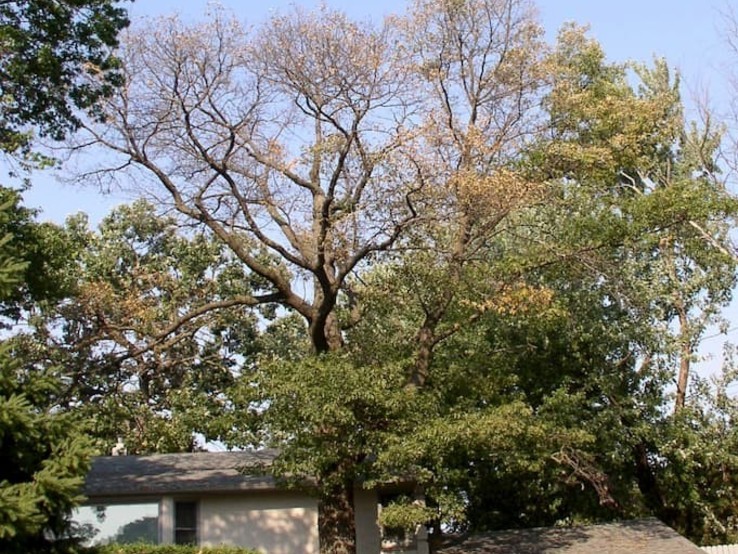White Oak Symptoms
Mexican White Oak (AKA Monterrey Oak) Symptoms
Quercus polymorpha
Often called the Monterrey Oak, I strongly dislike this term as it has a connotation of uniqueness of genetics and reclusive location. This tree will cross-pollinate and graft with dang near every oak – hence polymorpha (i.e. many forms).
It is not resistant to oak wilt!
It readily grafts with Live Oaks, etc. that have oak wilt. There will be massive losses of this over-planted species and a secondary epidemic outbreak will occur in those locations where this tree was planted in heavy numbers – almost to the point of replacing the monoculture of Live Oaks with a monoculture of this species.
Bigelow Oak Symptoms (also known as the Shin Oak)
Quercus sinuata var. breviloba
There is way too much confusion with nomenclature with this tree species. Many call it a (“bastard”) white shin oak, but there are four other oak species each with their own unique latin etymology. Generic names like shin or scrub actually make identification more of a challenge rather than easier – the purpose for common names to begin with.
This tree is also called a Limestone Durand Oak as it is genetically a sub-species of the Durand Oak (sinauta, sinuata), but by way of recognizing the unique aspects of this tree – I prefer to call it most often the Bigelow Oak. Note the first picture – for those who know this tree by its very unique paper shell, exfoliating bark one would likely conclude it is undoubtedly a Bigelow. Surprise surprise, the branching structure, leaf shape and color is Live Oak.
These two trees cross-pollinate. These two trees regularly graft. If one or the other gets oak wilt, one should anticipate the odds are quite high that most of the trees in neighboring or converged mots are connected. This white oak is not resistant to oak wilt!
Chinkapin Oak Symptoms
Quercus muelenbergii

a Tennessee area Chinkapin in the middle.
All three without Oak Wilt.
This species is becoming a more prevalent selection as an “oak wilt resistant” shade tree. I can confirm that, the native Chinkapin, which is quite reclusive and found mostly in riparian areas in the more mountainous areas in central Texas, does contract oak wilt from grafts both from Live Oak and Lacey Oak and Bigelow Oak, and it spreads it readily to other Chinkapins within root-graft distance. When it contracts this disease, it will often die within the first two years.
The Texas Forest Service in the “Forest Health: Identify and Manage Oak Wilt” brochure (a confusing, singular document that contradicts their historical position as well as all current positions regarding frequency, grafting, and mortality of native white oaks in every other public informational campaign; cf. texasoakwilt.tfs.tamu.edu; Identification section) confirms my experience regarding Lacey, Bigelow and Chinkapin (still deficient admission regarding the other white oaks – but that will hopefully change soon with some peer assistance…):
“However, those white oaks such as Shin Oak (i.e. Bigelow), Chinkapin Oak, and Lacey Oak that grow in stands with interconnected root systems, also may die in large numbers from oak wilt.”
By contrast, the Chinquapin oak grown/sold by most nurseries/tree outlets in the central Texas region is not a pure genetic specimen from our area. The genetics are from out of state. It is highly probable that these trees will not fare any better than their local region counterpart.
I will be watching these planted trees closely and suspect I will have a solid position on this tree quite soon. What I am certain of is that I regularly see in these Chinkapins from the nursery, anatomical features of the Mexican White Oak (AKA Monterrey Oak). As mentioned above, the Mexican White Oak will continue to cross with other oaks and make the likelihood of mortality only worsen for their crossbred progeny. In a later section, we will cover the serious implications for tree nurseries and landscape tree design and install.
Lacey Oak Symptoms
Quercus laceyi
Also known as the Blue Oak. Beautiful tree. Yes, this tree spreads oak wilt at the same speed as well as has as high of a mortality rate as Live Oak.
This white oak species is not resistant to oak wilt!
One of the videos I’ve taken recently is of a transference of oak wilt from a brand-new Live Oak mortality center to multiple neighboring Lacey Oaks. Within another recent video, I have captured a large Lacey Oak mortality center with a transference into a Spanish Red Oak mott.
Post Oak Symptoms
Quercus stellata
Would it be a bit interesting if you happened to hear a Texas Forest Service member say if they had numerous Post Oaks and one got oak wilt – that forester would proceed with injections – even up three times? Maybe confusing?
Often when I see Post Oak mortality centers – I see ample evidence of canker scaring on the trunks. All too frequently the dismissive, inexperienced, and possibly lazy investigator concludes immediately that drought caused hypoxolon to overtake and kill all those trees.
I am here to tell you emphatically that I regularly see active hypoxolon sporulation on live oaks at the later end of dying from oak wilt. Years later, the only evidence that may be left will likely by the hypoxolon canker scars – does that mean there was never any oak wilt present?!?
It is possible that Post Oaks, while they don’t die immediately from oak wilt (like the Bur Oaks in the upper Midwest – see below), very well may succumb to hypoxolon as a result of the weakened health. I am not equating all or even half of hypoxolon scaring to oak wilt – just that it is very likely and probable that some of those cases are a result of a weakened tree due to the virulent oak wilt pathogen.
Very often the leaf symptoms are hard to differentiate from other causes – not nearly as easy as Live Oaks.
Bur Oak Symptoms
Quercus macrocarpa
Bur oaks (along with the White Oak – Quercus alba) are regularly treated for oak wilt in order to prevent mortality in the Upper Midwest. Not only is this white oak NOT resistant - the US Forest Service has officially confirmed that they do form fungal mats, albeit rarely.
A Minnesota DNR forester during a Sustainable Forests Webinar, distinguishes between “susceptibility” of the red and white oaks in this way – they both can and will acquire to disease by way of overland vector or by root system (assuming both wounded and visited by a beetle or grafted to a neighboring infected tree), therefore both are equally susceptible.
The “resistance” between the two he explains in this fashion – Red oaks always die and do so much faster, while the native white oaks will take one or more years to progressively die unless treated with fungicide.
Personally, I would only accept the use of the term “resistant” for a tree who acquires oak wilt and can on its own record fight it off and or live with it in such a way that the tree’s value not only doesn’t diminish but it continues to increase as it continues to grow. Doesn’t that sound like a more accurate and appropriate use of the term…?
Also, quite pertinent here – Dr. William MacDonald during a presentation at a Symposium in Pittsburg, makes a very strong remark about the surprise and great concern that occurred by expert here and especially those in England when two of the greatest European oaks – Quercus robur (English Oak) and Quercus patraea – Sessile Oak were inoculated with oak wilt spores here in the U.S. and the mortality response was very similar to Red Oaks!
Without intensive research showing routine capacity of any oak to resist the fungus effectively on its own – no positive claim of resistance should be made! This must become the new protocol adopted by those who wish to responsibly educate and fight this disease with an eye to the future.
Joseph OBrien, USDA Forest Service, Bugwood.org
© licensed under a Creative Commons Attribution 3.0 License.
White Oak Symptoms
Quercus alba
This oak is not found in Texas. I have included it as I’m trying very deliberately to affect a greater cohesion of experience, knowledge, and practice/protocol within the nation and especially here in Central Texas.
This tree is namesake of the Family of White Oak species – I wonder if its “resistance” to mortality from oak wilt (may not die from it and slow dieback anywhere from 5-20 years appears to be the consensus of most every Northern state where they grow naturally.
Regardless – a tree slowly dying that more often than not needs fungicide to stop the slow-motion death, is not a tree thriving and growing and providing beauty and the promise of centuries of grandeur as one would be accustomed to from this stately, long-lived king of oaks by which the ink which signed the Declaration of Independence came from galls acquired from this species.
Images Courtesy of Rainbow Treecare Scientific Advancements
Fred Baker, Utah State University, Bugwood.org
© licensed under a Creative Commons Attribution 3.0 License.
European Oak Symptoms
Quercus patraea – Sessile oak; Quercus Robur – English oak; Quercus pubescens – Downy oak; Quercus suber – Cork oak; Quercus ilex – Holm oak
Why include oaks from another continent here?
- First, a number of these white oak family species are already planted here and cross-breeding with our native white oaks – making this information quite cogent.
- Second, a pathogen and its effects - the more thoroughly studied and understood, adds depth to our knowledge base of that pathogen and its host species.
- Thirdly, if it could pose a serious and devastating effect to Europe if the pathogen found its way there by accident due to an uninformed person – we should answer that question and disseminate that information to all good-willed people and make the appropriate protective laws required.
A multi-stage study of the above five European white oaks by inoculation of seedlings in 1984, 1986, and in 1987-1988 a “Short-term Susceptibility Test” was conducted by J. Pinon and Dr. W. L. MacDonald as a precursor to a massive later inoculative “Long-term Susceptibility Test” in 1996. The inoculations of these five species yielded extremely concerning preliminary results for all five white oak species in this author’s estimation as well as the scientists who stated: “In West Virginia 100% of all trees from all provenances, including Q. alba and Q. rubra controls, developed wilt symptoms (Table 2). Symptom expression was dramatic and mortality often occurred by the end of the season (Pinon et al. 1988).”
Below is the pre-eminent final, part-two study that tackled the question of three of European white oaks above and their capacity to tolerate the oak wilt fungus.
(Follow this link to purchase the book: Shade Tree Wilt Diseases)
Findings: “The most significant finding from this research is that symptom development among [these three] European white oak species is rapid, complete, and very similar to the high degree of susceptibility expressed by North American red oaks.” Little resistance was demonstrated by these European white oak species as “most of the European white oaks were dead or dying by the end of 1996, the year of their inoculation… This outcome was not anticipated… The critical message for arborists in the United States is that European oaks are highly susceptible to oak wilt and their use and care in landscape settings should be considered cautiously...”
The European Union, Clemson University, West Virginia Universities and the INRA (French organization) funded and conducted this incredibly important experiment. The EU has established stringent rules for imports of any oak item into Europe –the UK has established a complete moratorium of any oak item and also has established extreme measures of handling any occurrence of oak wilt.
We would do well to follow suit and conduct similar inoculations on all species of North American Oaks of mature size prior to irresponsible and ignorant assumptions of theoretical resistant designations. California especially should consider this effort prior to the inevitable arrival of this disease.
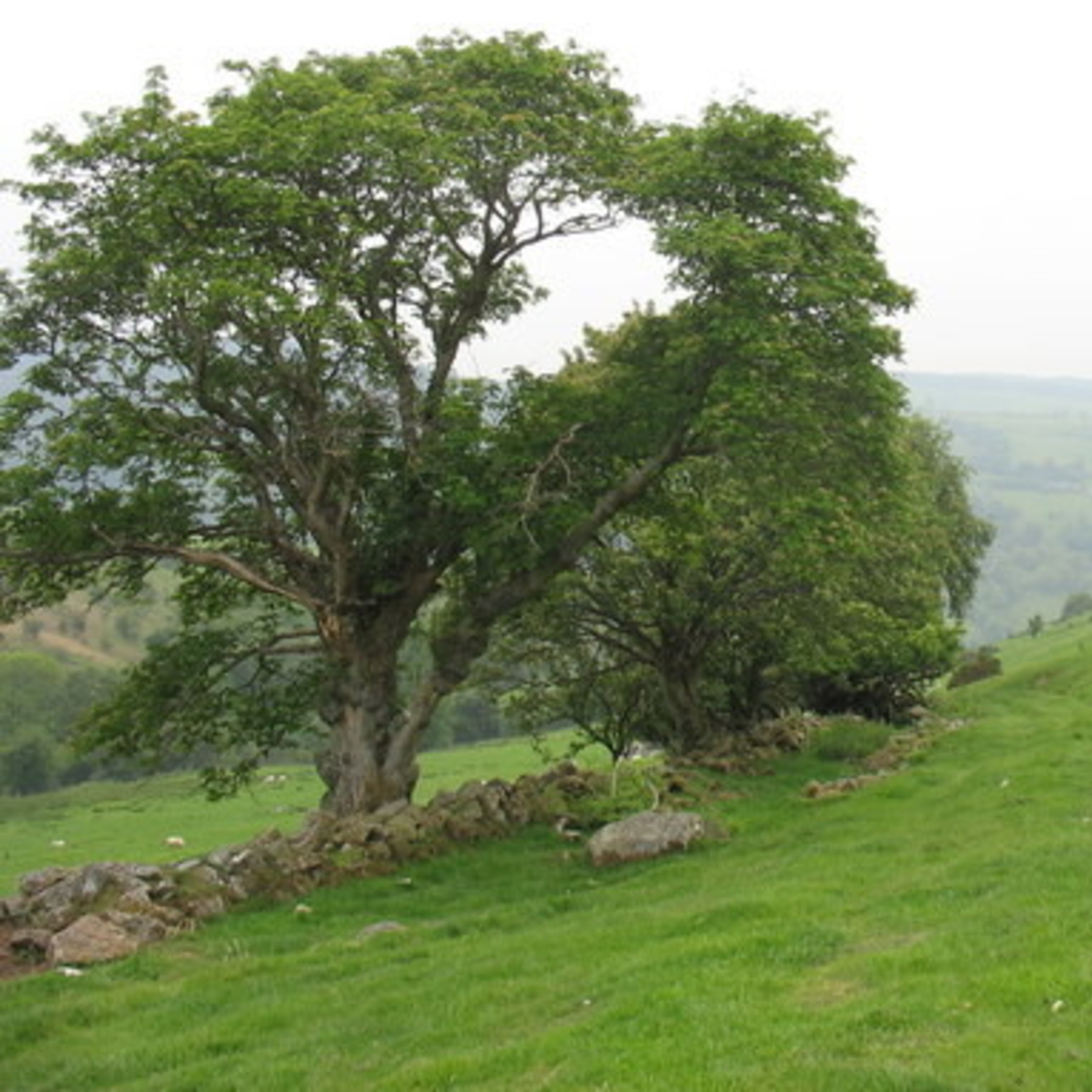
Sessile Oak - Quercus petraea
© Copyright Eric Jones and licensed for reuse under this Creative Commons Licence.
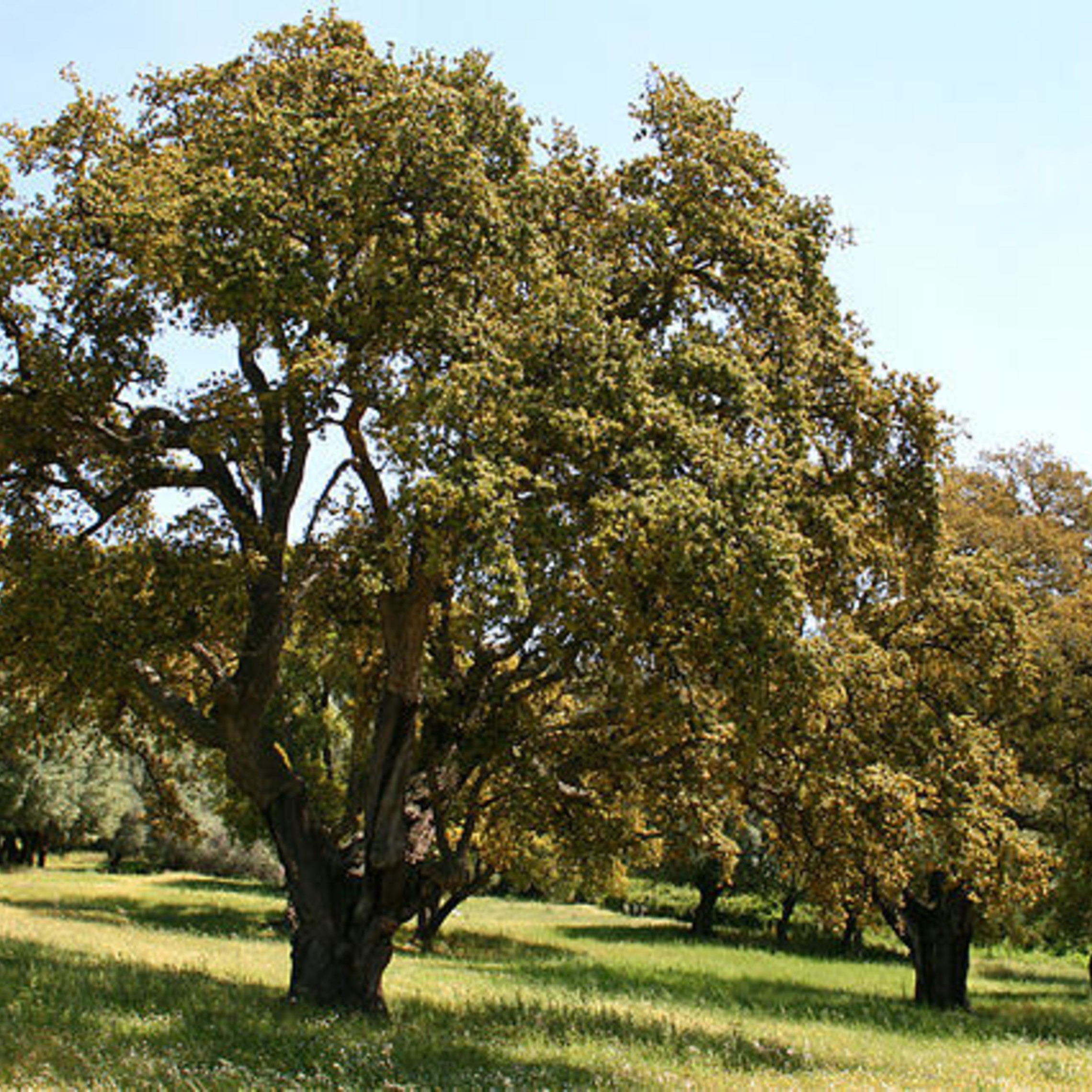
Cork Oak - Quercus suber
© Copyright Jean-Pol GRANDMONT and licensed for reuse under this Creative Commons Licence.

English Oak - Quercus robur
© Copyright Colin Craig - licensed for reuse under the Creative Commons Attribution-ShareAlike 2.0 license.
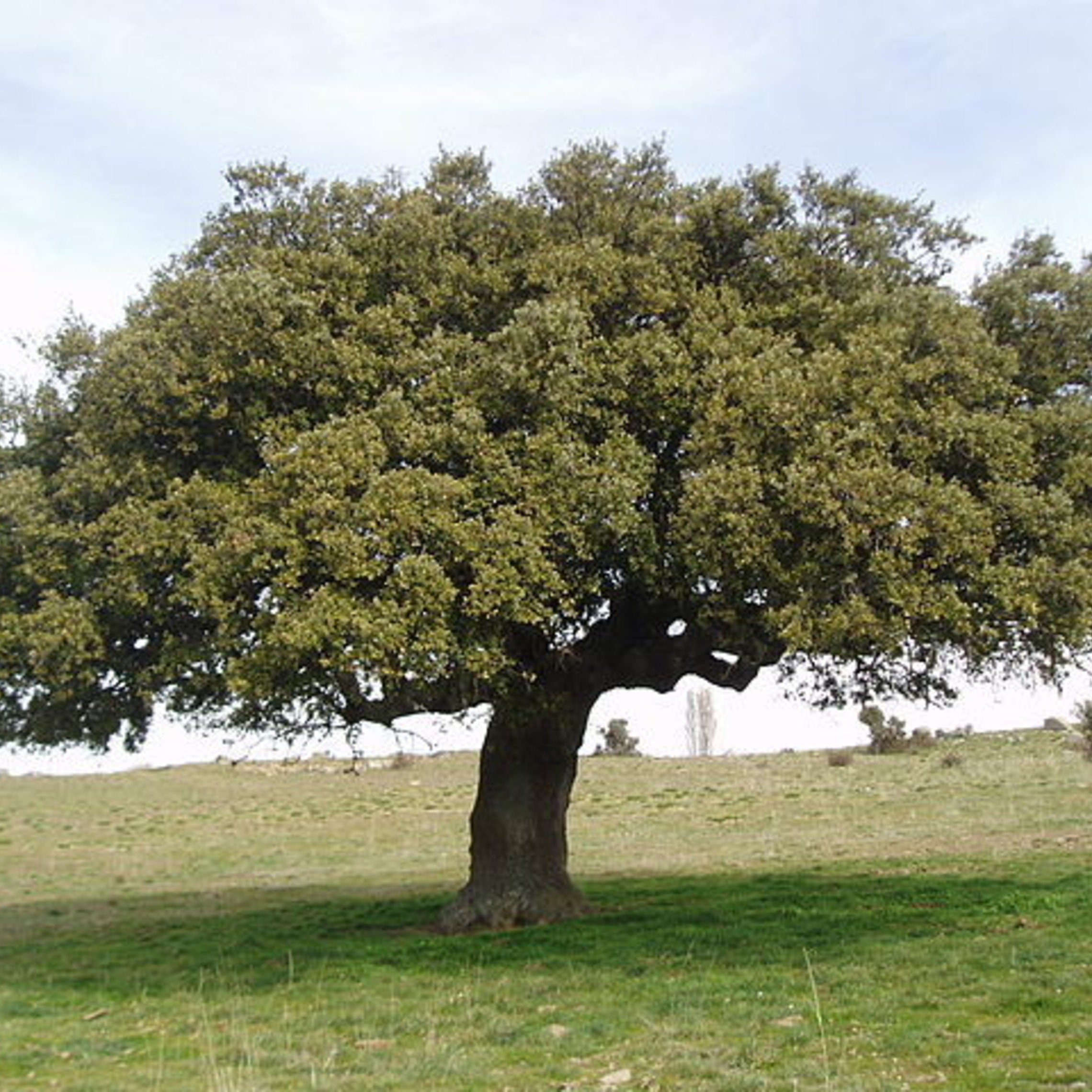
Holm Oak - Quercus ilex
© Copyright Propio and licensed for reuse under this Creative Commons Licence.

Downy Oak - Quercus pubescens
© This file is licensed under the Creative Commons Attribution 2.0 Generic license.




